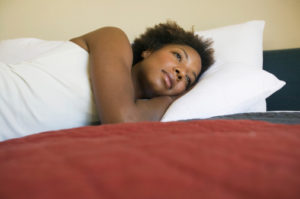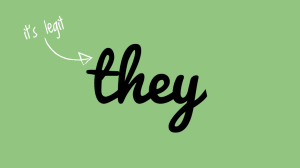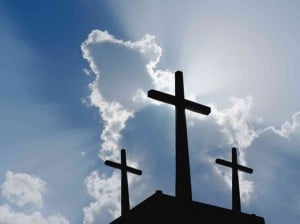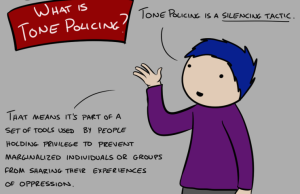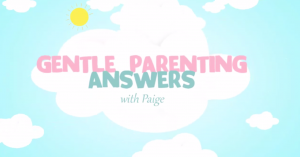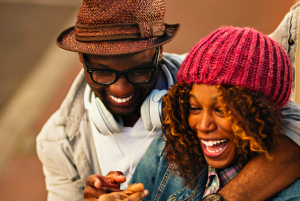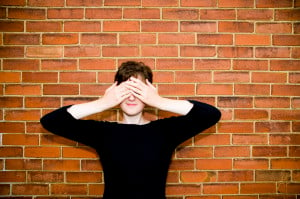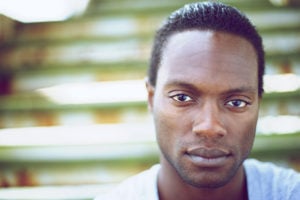Originally published on The Establishment and republished here with permission.
The exhaustion is heavy. It turns my eyelashes into bricks and each tear that escapes my eye into a stream of lava rearranging my face.
These cases of Black deaths are always sad and traumatic – it’s their frequency that makes them exhausting.
Before your heart catches up to one bullet, there is another one following behind. Before we properly mourned Alton Sterling, we watched Philando Castile fall victim to the same fate.
It was the week after the two shootings. I was in my bed, unable to get the images of the deaths of these two Black men out of my mind. Georgia’s summer heat was slipping through my open window as I fell in and out of sleep.
My small room began to suffocate me, but my exhaustion made it so I could hardly find the energy to do anything but lay in bed and attempt to make sense of these tragedies through words and food.
I was writing what I dreamed the world could be for Black life if we dismantled white supremacy, but it felt like a lie.
The reality of the brutality that was happening in the world — that is happening in the world — was a nightmare capable of haunting me whether I was asleep or awake. For days, I could only write and look at my ceiling.
Writing has often been my own way of showing resistance to oppression and solidarity for others who desire justice. Writing is my activism.
Soon, however, this didn’t feel like enough, and a sensation of guilt began accompanying my trauma. Perhaps, because writing comes effortlessly to me, I felt like I needed to move and be in the dirt to truly be doing something revolutionary or radical.
My grieving body longed to get dirty, to be used as part resistance and part paying my respect to the bodies that could not move like mine anymore due to their untimely deaths.
I felt compelled to be in the streets and protest, and that is exactly what I did the next day in Atlanta, Georgia at the #BlackLivesMatter protest in response to the murders of Alton Sterling and Philando Castile.
It was my first protest. I’d never seen that amount of bodies on the Atlanta streets I’ve been roaming since my teenage years.
Normally, these streets are full of fun, ambition, anticipation for the future. They’re usually alive, teeming with Black joy. The day of the protest, however, the streets were full of rage and grief. Tragedy and trauma were transforming my streets like July’s hot sun transforms an ice-cream cone.
Nobody had ever told me how sad protests are.
I was ready to be angry and active in public – but not sad. I discovered that protests feel like politicized public funeral – their sadness can’t be conveyed through pictures and videos.
It’s something you can only feel when your body is between a crying mother and a yelling son. You feel overwhelmingly vulnerable and exposed, and you’re trying to locate your power and composure in public while police are telling you where to go and not to go.
Black people know this emotional space well.
What was new for me, however, was the lens in my face. A snapshot was taken of me, a white journalist recording my confused grief.
The click of the camera caused me to look around at who else was marching with me – we were all grieving Black people.
The one white person in this crowd of protesters was there to capture this funeral, not participate. To my side, on the sidewalks, were white people with apologetic signs that read: “White silence is white violence.”
I couldn’t tell if they were truly there to participate or to consume Black grief in a more thrilling, intimate way.
Underneath the relentless sun, I remembered how it’s an American tradition to consume Black grief, and how that tradition has not left us, but merely transformed.
New York Daily News placed Alton Sterling’s dead body on the cover of their newspaper to generate sales through the spectacle of Black death.
Official news outlets continuously reshow the grisly murders of both him and countless other Black people. Social media sharing of these images and videos go viral, as well.
The practice harkens back to the white supremacist tradition of making a spectacle of the lynching of Black people. The murderers would carry out the act publicly, in front of crowds. Then photographs of the lynching would be sent to Black people’s homes as a way of further terrorizing and traumatizing the Black community.
Many people, including myself, believe that today’s sharing of videos and images of police violence function in the same way.
Typically, the people who most vehemently disagree are people who have careers invested in the sharing of Black death and brutality, for there is most assuredly a market for our pain.
As I continued to march, to bear my sadness in public, I put my sunglasses on to resist both the sun and consumption of my grief by white reporters and protesters.
My mind wandered to the interaction I’d had with writer and activist Shaun King on Twitter a couple of days prior. During racialized tragedies, Shaun King consistently posts and promotes the viral sharing of Black deaths. I locate it as colluding with the white supremacist tradition of making a spectacle of Black death.
King is notorious for collaborating with platforms that show these images repeatedly and sensationally with no regard to the Black people who might be re-traumatized in that process.
It became obvious to me that the perpetuation of these Black deaths weren’t to save Black people or to make Black people aware, but to shock or engage white people. This realization came when I noticed that the majority of people defending this practice weren’t Black people, but white people defending their right to carelessly share Black trauma.
This is exactly the phenomenon I experienced when I publicly argued with Shaun King about his sharing of Black deaths and violence.
The vast majority of people who supported him and his practice were white people who identified as liberal and, supposedly, allied with Blackness.
Even though I, a young dark Black boy who could easily be Mike Brown or Trayvon Martin, was telling them this practice was dangerous to Black people psychologically, they continued to resist and defend King’s practices by claiming that this viral sharing of the video was helping the word get out about injustice and violence.
Such an argument holds no weight these days. In 2016 any person – regardless of color – who doesn’t know about the injustice and violence against Black people doesn’t know about it because they don’t want to know about it.
The white supremacist system we knew in the 1800s is still at work today.
And like most oppressive systems, disagreement with the system doesn’t inherently stop the system from using you.
You can share images and videos under the guise of “spreading information and awareness,” but the fact is that this sharing not only makes a spectacle out of Black death, but also turns a profit on it – primarily for predominantly White-owned media.
The circulating of these images is a tool of white supremacy – just as it was in the 1800s.
A lack of critical engagement with how we spread media and collude in creating a spectacle out of Black death makes this white supremacist function possible.
This isn’t to say these videos aren’t important, but that we must revise how we share them and engage with them – on all media platforms and channels – if we don’t desire to create a new generation of even more psychologically harmed Black people.
This looks like trigger warnings. This looks like not making dead Black bodies the cover of your magazine or newspaper. This looks like not sharing violent viral videos incessantly on social media for no other reason than to “wake people up.”
If you locate yourself as someone who wants to resist violent white supremacy, you must not privilege white people having information or being shocked into action over Black people being irreversibly damaged.
As the sun softened into oranges and pinks and the protest began winding down, I sat at a nearby park with a friend. I confided in her that it had made me feel uncomfortable to see white journalists take photographs of me while I was in such a sad place.
I revealed my distrust of the white allies who had held signs on the sidewalks, and how, given the market that exists for images of our suffering, I’d questioned their intentions. I told her how, in my imagination, lynching and viral videos are in conversation with each other.
I prepared for her to tell me that I was wrong or oversensitive. She shocked me and said that everything I’d expressed, she’d felt, too. Relief supplanted the lingering sadness in the air, and we were left questioning exactly how to know the person who looks like your oppressor, but claims to be your ally, is telling the truth.
How can a Black person tell if the white person is at a protest to resist the imperialist white supremacist capitalist patriarchy, or to simply consume Black tragedy porn when videos on Facebook no longer pack the same punch?
We began discussing white “allies” – the ones who share violent police videos, or stand at the sidelines of protests with picket signs – agreeing that their ally-dom is deeply flawed.
All White people are privileged by white supremacy, but not loved by white supremacy – simply favorably used to perpetuate its evil.
White people under its thumb never get to create or be a whole person. Their whole existence, instead, is about perpetuating whiteness – through art, politics, daily habits, and preferences. Such white people are but tools of whiteness, deprived of experiencing humanity in its wholeness.
This reality shouldn’t make a white person an ally, but a fellow soldier in liberation work – someone who is active in resistance, rather than just consuming others’ resistance for a newspaper or from a view on the sidewalk.
White people shouldn’t be allies but on the front lines with disenfranchised people to deconstruct tyranny. White people should be listening when Black people tell them something is harmful. White people should be giving resources and assistance to Black people who are grieving.
White people should not be capturing Black trauma with cameras for a newspaper but using those same cameras to expose the evil of white supremacy. There is a plethora of different ways to resist the interlocking oppressions and to assist Black people in ways that don’t put Black lives up for consumption or psychological harm.
They all involve asking what is needed of you as a person privileged by whiteness and how you can use your body to create advancement, not further damage.
Our discussion led my friend and me to a nearby ice cream parlor, where we decided to treat ourselves after such an emotionally draining protest. We walked into the establishment, and although it was utterly informed by my sweet tooth, I felt joy.
While in line to order ice cream, my friend and I began to find laughs despite our shared experience of this violent consumption of our trauma and vulnerability. We laughed about how fearful white people can look when they’re not sure if you are mad at them for state violence or not. We laughed at the possibility of “Becky” being a racial slur. We laughed at Kanye West’s latest music video.
I think we were laughing because these things were humorous. I think we were laughing because the idea of crying anymore was just too much to imagine.
When our laughter finally dissipated, we observed that some of the white protesters we saw while marching were in line to get ice cream, too. One of the white protesters arrived at our side as we were up next to order, and offered to pay.
This wasn’t quite reparations, I thought with a grin. Sometimes, though, we realized, resistance and support can taste like free ice cream.
[do_widget id=’text-101′]
To read more from The Establishment, check out:
- The Pains Of Being Woke
- The Dangers Of The ‘Cool Girl’ Idea
- Why Are We Scared To Admit That Pregnancy And Childbirth Can Be Sensual?
Myles E. Johnson is a writer and the author of the children’s book “Large Fears.” He can be found on Twitter @hausmuva and his published work is available at hausmuva.com.
Search our 3000+ articles!
Read our articles about:
Our online racial justice training
Used by hundreds of universities, non-profits, and businesses.
Click to learn more


